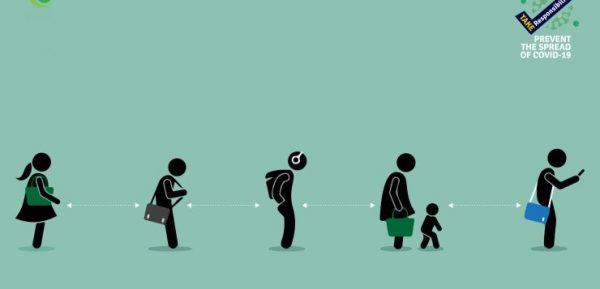SFH Workplace Advisory_COVID-19
The novel Coronavirus, COVID-19
NCDC Toll-Free Number: 0800 9700 0010;
- SMS: 08099555577;
- WhatsApp: 07087110839;
- Twitter/Facebook: @NCDCgov
OR Contact SFH via: info@sfhnigeria.org; Twitter/Facebook: @SFHNigeria
Information about the virus
As a group, coronaviruses are common across the world. COVID-19 is a new strain of coronavirus first identified in Wuhan City, China in January 2020. Coronaviruses are zoonotic i.e normally transmitted between animals and people. The 2019 novel coronavirus disease (COVID-19) is a new strain of coronavirus that has not been previously identified in humans. It was first detected on the 7th of January 2020 in Wuhan, China.
Some coronaviruses can be transmitted from person-to-person, usually after close contact with an infected person, for example, in a household or healthcare setting. For this novel coronavirus (COVID-19), while most initial transmission appeared to be zoonotic, person-to-person transmission is the most important common mode of transmission currently.
Currently, the incubation period i.e time it takes to start showing symptoms of COVID-19 is assessed to be between 2 and 14 days. This means that if a person remains well 14 days after contact with someone with confirmed coronavirus, they have not been infected.
Signs and symptoms of COVID-19
The following symptoms may develop in the 14 days after exposure to someone who has COVID-19 infection:
- Fever
- Cough
- Sore throat
- Difficulty in breathing
- Headache
Generally, these infections can cause more severe symptoms in people with weakened immune systems, older people, and those with long-term conditions like diabetes, cancer and chronic lung disease.
How COVID-19 is spread
From what we know about other coronaviruses, spread of COVID-19 is most likely to happen when there is close contact (2 metres or less) with an infected person. It is likely that the risk increases the longer someone has close contact with an infected person.
Droplets produced when an infected person coughs or sneezes containing the virus are the main means of transmission.
There are two main routes by which people can spread COVID-19:
- Infection can be spread to people who are nearby (within 2 metres) such that droplets could be inhaled into the lungs.
- It is also possible that someone may become infected by touching a surface, object or the hand of an infected person that has been contaminated with respiratory secretions and then touching their own mouth, nose, or eyes (such as touching door knob or shaking hands then touching own face)
There is currently little evidence that people who are without symptoms are infectious to others.
How long the virus can survive
How long any respiratory virus survives will depend on a number of factors, for example:
- What surface the virus is on
- Whether it is exposed to sunlight
- Differences in temperature and humidity
- Exposure to cleaning products
Under most circumstances, the amount of infectious virus on any contaminated surfaces is likely to decrease significantly over 72 hours (3 days).
We know that similar viruses are transferred to and by people’s hands. Therefore, regular hand washing (at least every 20 minutes) and cleaning of frequently touched surfaces will help to reduce the risk of infection.
We continue to encourage all employees to proceed with incorporating good hygiene and social distancing practices i.e staying at least 2 metres away from people to minimize the risk of infection:
- Avoid gathering in areas of socialization, such as pantries/kitchen, copier rooms, etc.
- Eat at your desk or other area in the workplace away from larger crowds.
- Avoid face-to-face meetings even when working within the same premises.
- Choose alternative forms of communication such as phone, video conference, chat, instant messaging, etc.
- Avoid close contact with anyone who is sick and stay home if you are sick.
- Avoid touching your eyes, nose, and mouth.
- Cover your cough or sneeze with a tissue, then throw the tissue in the trash.
- Clean and disinfect frequently touched objects and surfaces using a regular household cleaning spray or wipe.
Wash your hands often with soap and water for at least 20 seconds, especially after going to the bathroom; before eating; and after blowing your nose, coughing, or sneezing. If soap and water are not readily available, use an alcohol-based hand sanitizer with at least 60% alcohol.

